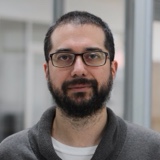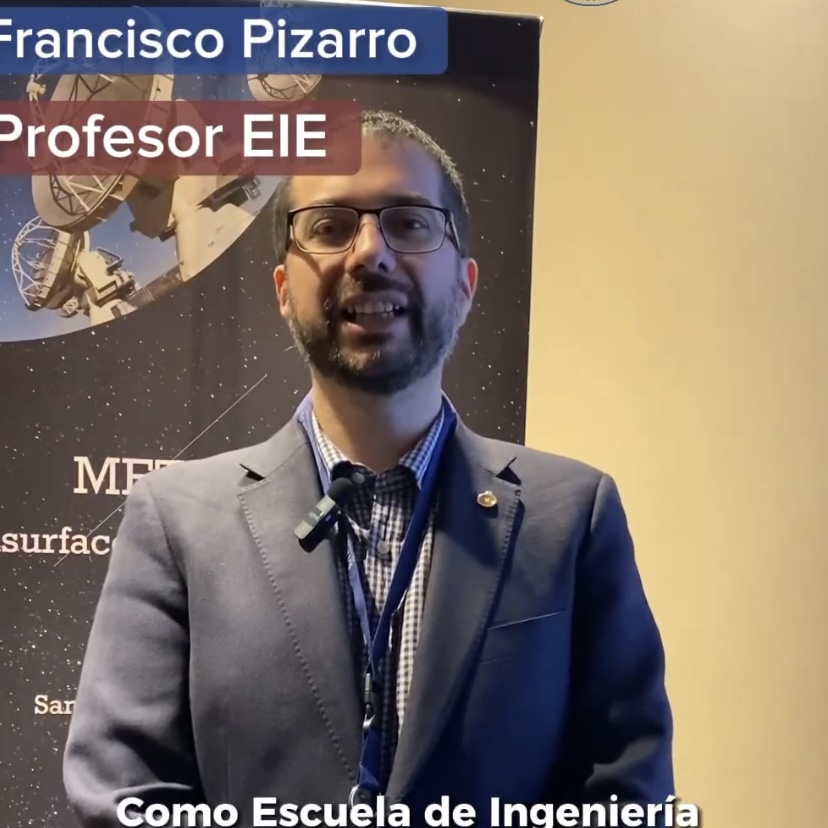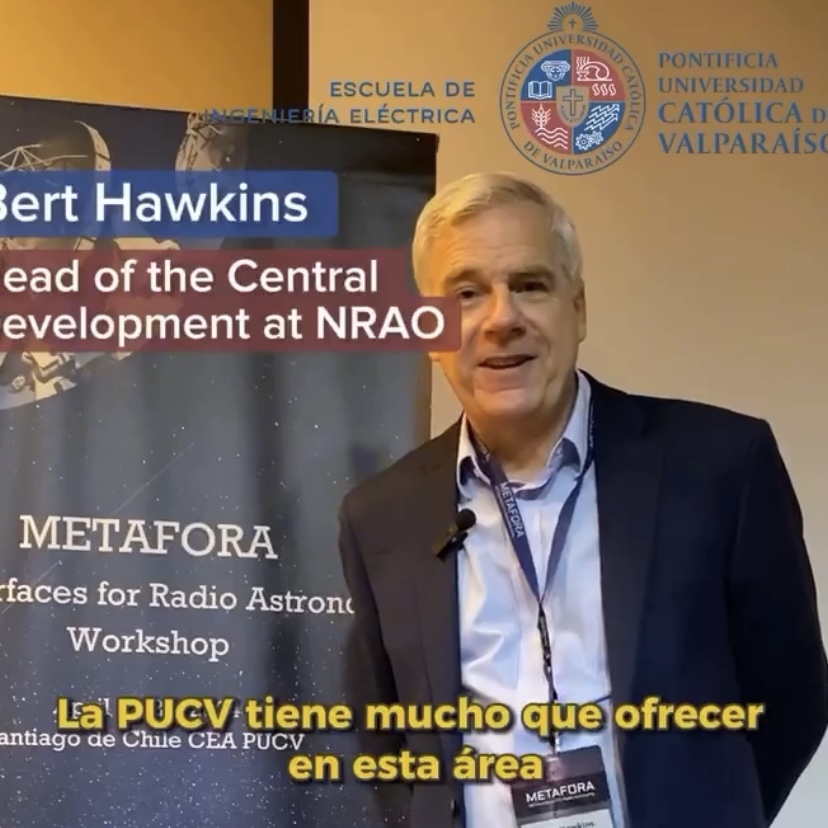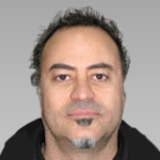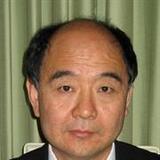<- back


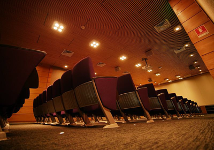

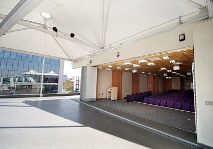

22 to 24
April 2024
Santiago, Chile

This workshop is part of a unique collaboration between Chile and Sweden, focusing on advancing radio astronomy and the application of metasurfaces in space research.
Event Details:
Dates: April 22-24, 2024
Venue: Centro de Estudios Avanzados, PUCV, Santiago, Chile
https://espaciocea.cl/





Organizers
Event Photos
Here's a glimpse of the memorable moments captured during the workshop
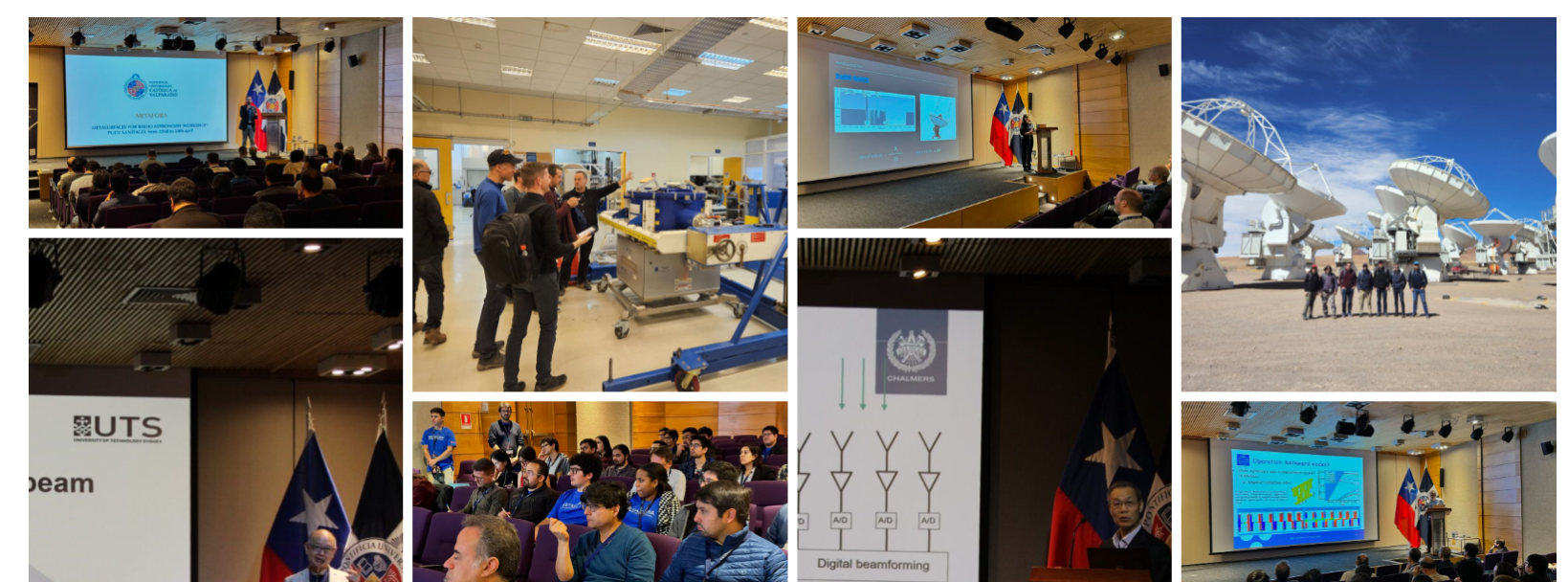
View more photos ->
Interviews
DAY ONE
9:00 - 9:30
Registration
9:30 - 10:00
Opening
10:50- 11:20
Coffee Break

13:00- 14:15
Lunch Break

18:00- 21:00
Welcome activity
DAY TWO

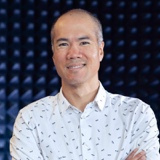
11:10- 11:40
Coffee Break
12:35- 13:45
Lunch Break
13:50 - 15:00
Students presentation and poster session
13:50 - 15:00
METAFORA round table
DAY THREE

10:50- 11:20
Coffee Break

12:35- 13:45
Lunch Break

14:00 - 14:45
Speaker
Mats Gustafsson
15:00
Closing ceremony
Sponsors
Talks
Oscar Quevedo Teruel
KTH - Sweden.
Abstract: Glide symmetry exists in many forms in nature. For example, glide symmetry is found in certain fossils, worms and sea pens. Even something as simple as our footprints are glide symmetric. Thus, it is no wonder that humans have developed some fascination for glide-symmetric shapes. One of the most significant early representations of glide reflections is found in the Moorish tessellations in the Alhambra Palace in Granada, Spain. These tessellations inspired the 20th century Dutch graphic artist Maurits Cornelis Escher, well-known in popular culture for his art with a strong mathematical component. In electromagnetics, glide symmetries were first studied in the '60s and '70s of the last century. Although periodic structures with glide symmetries demonstrated that they possessed remarkable properties in these early works, the research on the topic stagnated for about three decades. Community interest in glide symmetry was revived in 2016 with practical works demonstrating its remarkable properties for modern day microwave devices, with applications in 5G terrestrial communication systems, millimeter-wave satellite systems and automated contactless measurement techniques to name a few. In this presentation, Prof. Quevedo-Teruel will describe the recent discoveries on the remarkable properties of glide-symmetric periodic structures, which include widened stopbands, reduced dispersion, as well as enhanced anisotropy and magnetic response. He will also review the recent use of these remarkable properties for solving technological problems in practical devices such as filters, gap waveguide components, low-leakage flanges, compressed lenses, low-reflected material transitions and leaky-wave antennas with applications in 5G terrestrial communication systems, millimetre-wave satellite systems and automated contactless measurement techniques.

Luis Chavarría
European Southern
Observatory
representative in Chile
Abstract:

Bert Hawkins
Director, Central
Development Laboratory
at National Radio
Astronomy Observatory
Abstract: The Central Development Laboratory (CDL) at the National Radio Astronomy Observatory (NRAO) has a multi-role mission, including: • Developing new, science-driven technology for the next generation of radio astronomy telescopes; • Maintaining and improving the performance of existing NRAO telescopes; • Producing patents and licensable intellectual property to spur development of new markets; This includes technology development for the next generation Very Large Array (ngVLA) [1], the next generation Radar program (ngRADAR) [2], the ALMA Band 6 second generation receiver [3]. and NSF’s National Radio Dynamic Zone initiative (https://info.nrao.edu/do/spectrum-management/national-radio-dynamic-zone-nrdz). The Laboratory also has responsibility for investigating emerging technologies that could address capability gaps with our current instruments. For example, CDL has a research program to develop “Kinetic inductance traveling-wave parametric amplifiers (KI-TWPA)”, a superconducting device that hold the promise of amplification with wide instantaneous bandwidth and near quantum-limited sensitivity at frequencies beyond the capabilities of current low noise amplifiers [4], [5]. The Laboratory is also investigating the performance characteristics of passive microwave components produced by additive manufacturing techniques. [6] For ngVLA, the CDL is developing the next generation integrated receivers, low noise MMIC amplifiers, performing optics analysis, correlator development, and investigating local oscillator timing and reference schemes. For ngRADAR, CDL staff are working with Raytheon Corporation to develop a high power radar system. CDL staff are upgrading the ALMA Band6 (211 to 275 GHz) receiver cartridge to conform to new requirements as part of ALMA’s Wideband Sensitivity Upgrade (WSU), and in support of the NSF’s National Radio Dynamic Zone initiative, the Laboratory is developing an automated, sensitive, wideband spectrum monitor with direction-finding capabilities. In this talk, we will provide an overview of these development efforts and the projects they support. In addition, we will highlight the aspects of these developments that could lend themselves to a metamaterial solution, and address the unique requirements that radio astronomy would impose on such devices.
References
1. ngVLA.nrao.edu
2. P. Taylor et al. “The next generation planetary radar system on the Green Bank Telescope.” Proceedings of the Advanced Maui Optical and Space Surveillance Technologies Conference, Maui, HI, USA. 2022.
3. A. Navarrini et al., “ALMA Band 6v2 receiver development status,” 2023 XXXVth General Assembly and Scientific Symposium of the International Union of Radio Science (URSI GASS), Sapporo, Japan, 2023, pp. 1-4, doi: 10.23919/URSIGASS57860.2023.10265563.
4. J. Carrasco, D. Valenzuela, C. Falcón, R. Finger and F. P. Mena, "The Effect of Complex Dispersion and Characteristic Impedance on the Gain of Superconducting Traveling-Wave Kinetic Inductance Parametric Amplifiers," in IEEE Transactions on Applied Superconductivity, vol. 33, no. 3, pp. 1-9, April 2023, Art no. 1500509, doi: 10.1109/TASC.2023.3243464.
5. M. W. Pospieszalski, "On the limits of noise performance of field effect transistors," 2017 IEEE MTT-S International Microwave Symposium (IMS), Honololu, HI, USA, 2017, pp. 1953-1956, doi: 10.1109/MWSYM.2017.8059045.
6. “NRAO and Optisys Partner Up to Produce 3D Devices for Radio Astronomy”. https://public.nrao.edu/news/nrao-optisys-produce-3d-devices-radio-astronomy/

Jay Guo
Distinguished Professor
University of Technology
of Sydney
Abstract: In this talk, we shall present three types of metasurface-based antennas with unique characteristics; these serve as a reflection of our recent research on metasurfaces. The first is a transmitting metasurface antenna with frequency-dependent beam scanning capability. Continuous beam scanning is demonstrated successfully from 80 to 220 GHz, showing beam scanning ranges of up to 31.5°. The second is a fixed-frequency reconfigurable metasurface transmitarray. The metasurface consists of many dual-layer Huygens elements employing two metallic crosses printed on two layers of a dielectric substrate, which enables a near non reflection Huygens resonance. A 1-bit phase compensation with low transmission loss is realized by controlling two p-i-n diodes on the element. The antenna achieved 2-D scanning beams within ±50° in the E-plane and ±40° in the H-plane with a maximum realized gain of 18.4 dBi. The third type metasurface-based antenna is a modulated metasurface multibeam antenna using beam launchers. The source locations are optimized by employing the aperture field calculated from a zeroth-order approximation of the currents on the surface. Seven fixed beams with -10dB overlap are successfully generated.

Jian Yang
Full Professor
Chalmers University
of Technology
Abstract:This talk presents a new development on a cryogenic C-band ultra-wideband (4-8.5 GHz) phased array feed for SKA reflector. The elements of the array feed are recently developed folded Bowtie antennas that have a compact size in order to achieve the ultra-wideband. System design and optimization have been carried out to optimize the performance of the antenna system

Giorgio Siringo
ESO-ALMA
ALMA Front
end technical lead
Abstract:Mm/submm astronomy studies the Universes in that portion of the electromagnetic spectrum that goes from a wavelength of a few millimeters down to 300 micron (1 THz). In this range of wavelengths, metasurfaces for different applications, such as anti-reflection coating or polarization retarders, can be produced with a relatively simple design and manufacturing process.
Bio: International staff member of the European Southern Observatory with duties in Chile at the Joint ALMA Observatory. Covering the roles of the observatory's Senior RF Engineer, Front-End Technical Lead and Spectrum Manager.
Ricardo Finger
Associate Professor
Universidad de Chile
Abstract:
Brian Walker
Senior RF Engineer,
SME at Copper Mountain
Technologies
Abstract: This presentation will introduce and demonstrate the use of a compact mm-Wave antenna measurement system. Current solutions for antenna measurement are very large and expensive. As we move into the mm-Wave range it is possible to re-imagine what is required for testing. At lower frequencies it is necessary to build a Faraday cage to prevent ingress of signals which would interfere with measurement. Above 18 GHz though, there is little to no radiation in the air and a Faraday cage is no longer necessary. Additionally, the far-field measurement distances are much shorter, and a large enclosure isn’t required. The presented system is capable of performing automated far-field measurement at mm-Wave frequencies. The radiation pattern of a horn antenna will be performed and compared to the data sheet plots.
Bio: Brian Walker is the Senior RF Engineer, SME at Copper Mountain Technologies where he helps customers to resolve technical issues and works to develop new solutions for applications of VNAs in test and measurement. Previously, he was the Manager of RF design at Bird Electronics, where he managed a team of RF Designers and created new and innovative products. Prior to that he worked for Motorola Component Products Group and was responsible for the design of ceramic comb-line filters for communications devices. Brian graduated from the University of New Mexico, has 40 years of RF Design experience, and has authored 3 U.S. Patents.

M. Carmen Toribio
Nordic ALMA
Regional Center Onsala
Space Observatory
Abstract:The Atacama Large Millimeter/submillimeter Array (ALMA) has recently celebrated 10 years of science operations. The human team involved in the project and the advanced capabilities of this unique instrument have allowed the astronomical community to exploit the (sub-)millimeter window to observe the Universe. ALMA has revolutionized the field of radio-astronomy, to the point that many of its discoveries have already transpired to the whole of society. After this successful first decade, ALMA is embarking in an ambitious system upgrade, the ALMA Wideband Sensitivity Upgrade, to keep the telescope at the forefront of millimeter/submillimeter astronomy towards 2030.
In this talk I will first introduce the technique of radiointerferometry, which allows us to obtain astronomical images by combining the 66 antennas of ALMA. I will also highlight some of the most relevant scientific results obtained with ALMA in the past 10 years and the contributions from Sweden to the project. Finally, I will present the plans to upgrade the telescope in the years to come.
David Prinsloo
The Netherlands
Institute for Radio
Astronomy (ASTRON)
Abstract:This talk presents an overview of the antenna array-based instrument concepts developed within The Netherlands Institute for Radio Astronomy (ASTRON). Concepts presented include a Solar monitoring phased array station operating from 30 MHz to 3 GHz and a jamming-resilient conformal phased array for Global Navigation Satellite System (GNSS) applications. All presented array concepts operate at frequencies below 3 GHz, resulting in conventional antenna array principles being applied to the design of these instruments. In light of these concepts, opportunities for the use of lenses, either as receiving apertures or beamforming networks, are presented.

Daniel Sjöberg
Professor, Lund
Abstract:We have worked with frequency selective surfaces (FSS) in the context of radomes on aircrafts. These are designed to be transparent in the antenna's frequency band of operation, and as closed as possible outside this band in order to minimize scattering. The designs are typically made in a planar, periodic setting, whereas the final structures are applied to doubly curved surfaces, leading to unwanted scattering from defects and joints between periodic structures. We present some work done in mitigating scattering from edges of periodic structures joining conducting fuselages, where the discontinuity is smeared out by applying a tapered resistive sheet. We also present experimental work in characterizing defects in radomes and panels using imaging techniques such as determining equivalent sources from near field measurements. Circular polarization selective surfaces (CPSS) reflect one circular polarization and transmit the other. These are desired in satellite communication systems, using different polarizations for different channels. We give an overview of various proposed designs for CPSS, and give a detailed treatment of our own design, manufacturing, and experimental verification of a multilayer design based on rotating anisotropic sheets. It has a wideband performance, and can be tuned to have dual band properties (for instance, reflecting RHCP at K band and reflecting LHCP at Ka band). In this context, we also discuss some general properties of circular polarization, for instance how to describe CP in the time domain using Hilbert transforms.
 comprise a spectrum of artificially engineered surfaces for manipulating the temporal and/or spatial dispersion of electromagnetic waves. These include structures such as reflectarrays, transmitarrays, frequency selective surfaces, polarizers, and electromagnetic metasurfaces. In this talk, systematic design techniques that greatly ease of the implementation of AESs will be presented. The talk will include numerous examples of experimental AES implementations, including frequency-selective surfaces, multi-band polarizers, and beam-forming surfaces that can be used to realize useful components in aerospace and wireless communication systems. Reconfigurable surfaces and their capabilities will also be highlighted, with particular emphasis on possible applications in radio astronomy.
</div>
</div>
</div>
<div class=)
Mats Gustafsson
Professor, Lund
University
Abstract:Fundamental limits investigate what can and cannot be expected from electromagnetic devices such as antennas and scatterers. These limits are often crucial for metamaterials and metasurfaces when one aims to design structures with properties not found in ordinary materials and devices. The study of limits on electromagnetic systems has recently evolved from classical results on small antennas, matching, and absorbers to encompass arbitrary shaped geometries, materials, and metrics. In this overview, we focus on performance limits of electromagnetic systems, specifically concentrating on sum rules and convex optimization over electromagnetic currents. Sum rules, for example, as used by Purcell to investigate interstellar dust in 1969, have been instrumental in understanding the ultimate performance of antennas, scatterers, absorbers, and metamaterials. The source-based techniques are founded on the relaxation of Maxwell's equations into convex optimization problems. This highly versatile technique can be applied to a wide range of electromagnetic problems. The bounds obtained through these techniques are compared with classical and optimized designs, offering insights into the potential and constraints of electromagnetic systems. Inverse design is intricately connected to these bounds, offering a natural avenue to assess the performance of a given design. In our presentation, we present inverse design techniques, encompassing topology optimization and heuristics, to further elucidate this relationship.
